Assisi is a town and comune of Italy in the Province of Perugia in the Umbria region, on the western flank of Monte Subasio.

Lake Garda is the largest lake in Italy. It is a popular holiday location in northern Italy, between Brescia and Milan to the west, and Verona and Venice to the east. The lake cuts into the edge of the Italian Alps, particularly the Alpine sub-ranges of the Garda Mountains and the Brenta Group. Glaciers formed this alpine region at the end of the last ice age. The lake and its shoreline are divided between the provinces of Brescia, Verona (south-east) and Trentino (north).

Lake Maggiore or Verbano is a large lake located on the south side of the Alps. It is the second largest lake in Italy and the largest in southern Switzerland. The lake and its shoreline are divided between the Italian regions of Piedmont and Lombardy and the Swiss canton of Ticino. Located halfway between Lake Orta and Lake Lugano, Lake Maggiore extends for about 64 kilometres between Locarno and Arona.

The properties of the Holy See are regulated by the 1929 Lateran Treaty signed with the Kingdom of Italy. Although part of Italian territory, some of them enjoy extraterritoriality similar to those of foreign embassies.
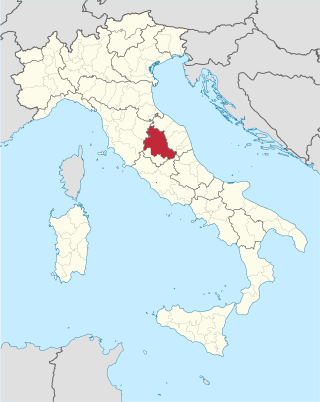
The Province of Perugia is the larger of the two provinces in the Umbria region of Italy, comprising two-thirds of both the area and population of the region. Its capital is the city of Perugia. The province covered all of Umbria until 1927, when the province of Terni was carved out of its southern third. The province of Perugia has an area of 6,334 km² covering two-thirds of Umbria, and a total population of about 660,000. There are 59 comunes in the province. The province has numerous tourist attractions, especially artistic and historical ones, and is home to the Lake Trasimeno, the largest lake of Central Italy. It is historically the ancestral origin of the Umbri, while later it was a Roman province and then part of the Papal States until the late 19th century.

Sirmione is a comune in the province of Brescia, in Lombardy. It is bounded by Desenzano del Garda (Lombardy) and Peschiera del Garda in the province of Verona and the region of Veneto. It has a historical centre which is located on the Sirmio peninsula that divides the lower part of Lake Garda.
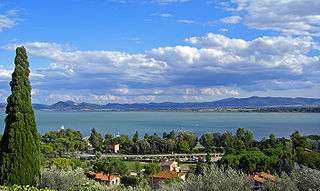
Lake Trasimeno, also referred to as Trasimene or Thrasimene in English, is a lake in the province of Perugia, in the Umbria region of Italy on the border with Tuscany. The lake is south of the river Po and north of the nearby river Tiber and has a surface area of 128 km2 (49.4 sq mi), making it the fourth largest in Italy, slightly smaller than Lake Como. Only two minor streams flow directly into the Lake and none flows out. The water level of the lake fluctuates significantly according to rainfall levels and the seasonal demands from the towns, villages and farms near the shore.
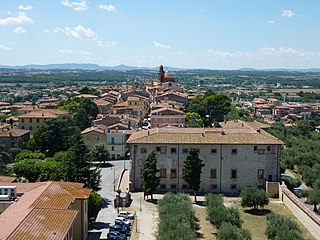
Castiglione del Lago is a town in the province of Perugia of Umbria, on the southwest corner of Lake Trasimeno. Orvieto is 59 km (37 mi) south, Chiusi is 21 km (13 mi) to the south west, Arezzo is 56 km (35 mi) to the north west, Cortona is 21 km (13 mi) to the north and Perugia is 47 km (29 mi) to the south east.
Maggiore means "major" or "large" in Italian. It can refer to:

The aristocratic House of Borromeo were merchants in San Miniato around 1300 and became bankers in Milan after 1370. Vitaliano de' Vitaliani, who acquired the name of Borromeo from his uncle Giovanni, became the count of Arona in 1445. His descendants played important roles in the politics of the Duchy of Milan and as cardinals in the Catholic Reformation. In 1916, the head of the family was granted the title Prince of Angera by the King of Italy.

Isola Madre, at 220 m wide and 330 m long, is the largest island of the Isole Borromee archipelago which falls within the Italian part of the Alpine Lake Maggiore, in the Province of Verbano Cusio Ossola, Piedmont. The island is occupied by a number of buildings and architectural structures and is especially well known for its gardens. In the past it was known as Isola di San Vittore and later as Isola Maggiore.

Isola Polvese or Polvese Island is an island situated in the southeastern part of Lake Trasimeno and is the largest of the three islands of the lake. The area is of historical and naturalistic interest. Today, the island belongs to the Province of Perugia and is known as a Scientific-Didactic Park, which is a part of Trasimeno Regional Park. The island is a part of Castiglione del Lago.
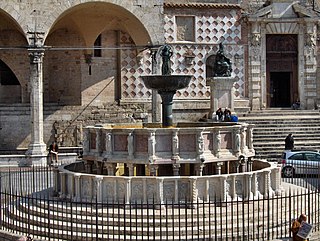
The Fontana Maggiore, a masterpiece of medieval sculpture, placed in the centre of Piazza IV Novembre, is the monument symbol of the city of Perugia.

Isola del Garda or Isola di Garda or Isola Borghese is the biggest island on Lake Garda. It is part of the comune of San Felice del Benaco, in the Province of Brescia, Lombardy, Italy. The island has a long and varied history, having been used as a Roman burial ground, pirate lair, a site for a Franciscan monastery, border fortification and as a residential villa. The island has been visited by numerous famous people over the centuries, reportedly including Francis of Assisi, Anthony of Padua and Dante Alighieri. Today, it is covered by a park and is dominated by the Venetian neo-Gothic Villa Borghese Cavazza. Although privately owned by the Cavazza family, Isola del Garda has been open to visitors since 2002.

The Badia of Sant’Arcangelo is a former Benedictine abbey founded around the year 1000. It is located above the village of Sant’Arcangelo, which is part of the commune of Magione, on the south-eastern shore of lake Trasimeno in the Italian region of Umbria.
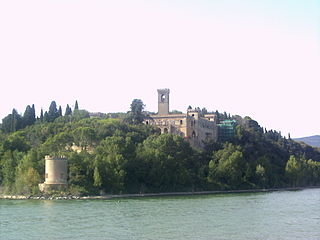
The Guglielmi Castle, or Isabella Castle, is located in the southern part of the Isola Maggiore, one of the three islands in Trasimeno Lake in the province of Perugia, Umbria, Italy.

The Castle of Montesperello, is a castle located 1 km southeast of the Comune of Magione, which is part of the Province of Perugia, in Umbria, Italy. The Castle has been built during the Carolingian Empire on top of Mountain Penna. In the same area, traces of an Etrurian settlement are to be found.
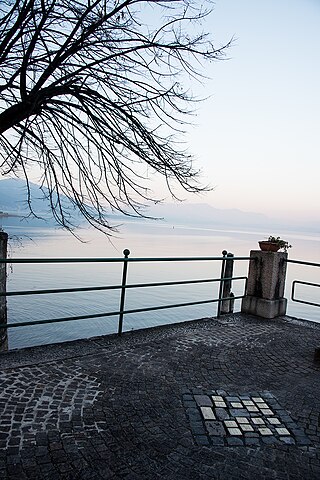
The Lake Maggiore massacres was a set of World War II war crimes that took place near Lake Maggiore, Italy, in September and October 1943. Despite strict orders not to commit any violence against civilians in the aftermath of the Italian surrender on 8 September 1943, members of the 1st SS Panzer Division Leibstandarte SS Adolf Hitler murdered 56, predominantly Italian and Greek, Jews. Many of the bodies were sunk into the lake to prevent discovery but one washed ashore in neighbouring Switzerland, drawing international attention to the massacre and prompting an inconclusive divisional inquiry. It is commonly referred to as the first German massacre of Jews in Italy during World War II.


















